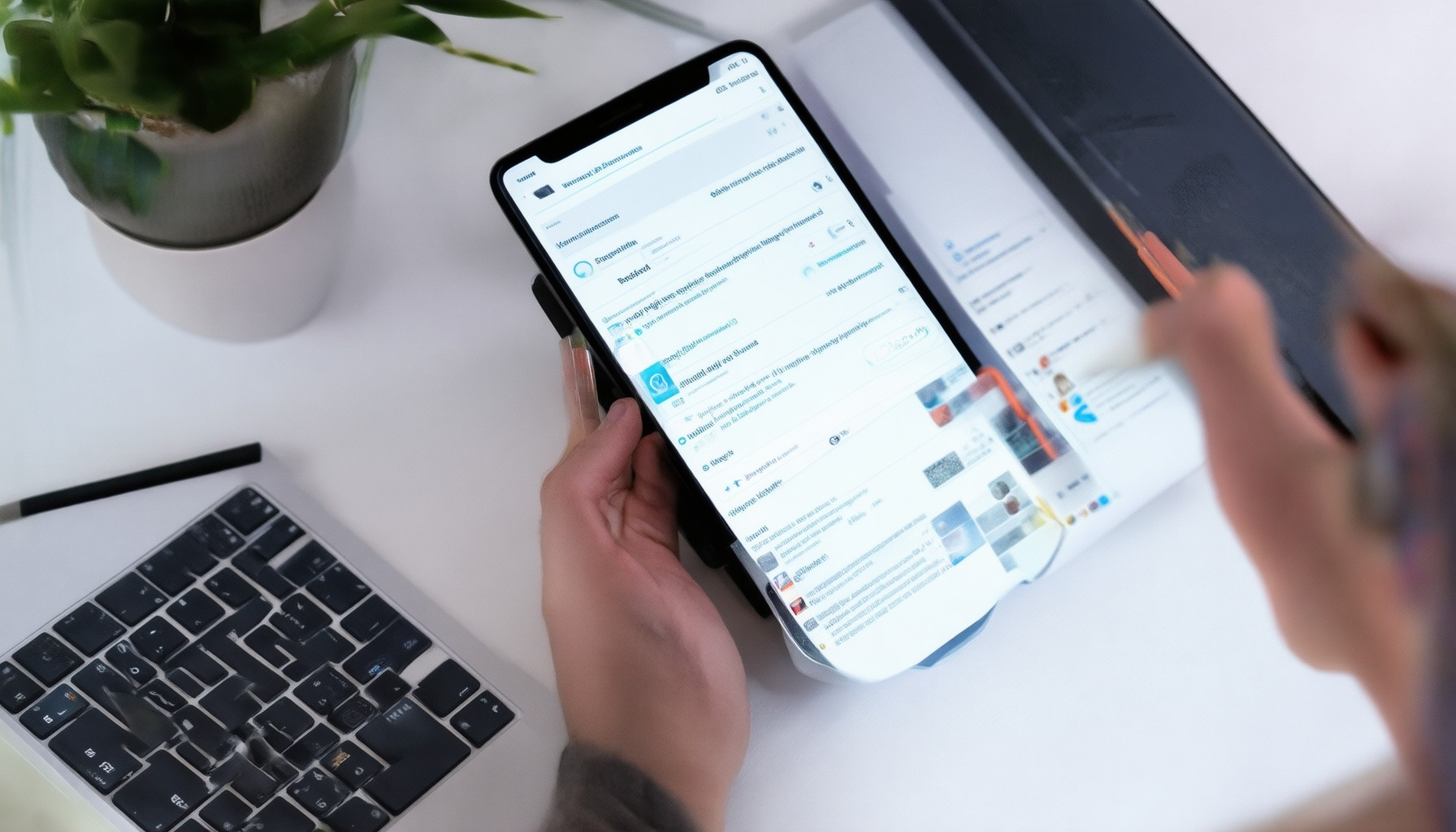In today’s digital age, protecting your privacy online has never been more essential. Whether you’re concerned about safeguarding personal information or simply want to browse the web with greater control, there are effective strategies to enhance your online privacy. Discover practical privacy tips for browsing that can help you navigate the internet securely and confidently.
Key Takeaways
– Minimize Data Exposure: Limit the information you share online and review apps/services before granting access to your data.
– Enhance Privacy Protection: Use tools like Virtual Private Networks (VPNs) and encrypted messaging apps to safeguard your online activity.
– Enable Privacy Settings: Regularly adjust device and account settings to control data collection, tracking, and sharing.
– Adopt Data Minimization: Collect only essential personal data to reduce risks of unauthorized access or misuse.
– Ensure Lawful Processing: Always comply with legal standards for data handling, including obtaining consent for sensitive information.
– Implement Robust Security: Use encryption, access controls, and strong passwords to protect your data from breaches.
– Foster Accountability: Establish clear policies and monitor data-handling practices to ensure compliance with privacy regulations.
– Understand Privacy Categories: Recognize personal privacy, data collection, communication, online activity, and public space privacy to better manage your information.
– Protect Communication Confidentiality: Encrypt messages and avoid metadata that could reveal personal details.
– Safeguard Online Activity: Utilize VPNs and private browsing modes to shield your activities from prying eyes.
– Advocate for Public Space Privacy: Work towards reducing surveillance in physical locations to protect individual freedoms.
– Explore Resources for Enhanced Privacy: Visit BlindBrowser.com for tools to boost your online privacy efforts.

How Can You Be Safer When Browsing?
Your online safety is crucial in today’s digital world. By following these practical steps, you can enhance your browsing experience while safeguarding your personal information.
1. Use a Reliable Virtual Private Network (VPN)
A VPN encrypts your internet connection, making it difficult for third parties to track your online activities. Consider using BlindBrowser’s VPN service for added protection. It ensures your data remains secure, especially on public Wi-Fi.
2. Enable HTTPS
Always look for the HTTPS padlock icon before entering sensitive information. This ensures your connection is encrypted, protecting your data from potential eavesdroppers. Most modern browsers support this feature, so enable it in your settings for added security.
3. Regularly Update Your Browser and Software
Updates often include security patches that fix vulnerabilities. Check for updates regularly and install them promptly to minimize risks of malware or hacking attempts. Visit your browser’s official website or trusted app stores for updates.
4. Create and Manage Strong Passwords
Use unique, complex passwords for every account. Store them securely using a password manager. BlindBrowser’s password manager offers robust features to help you manage your credentials effectively.
5. Implement Two-Factor Authentication (2FA)
Add an extra layer of security with 2FA. Enable this feature for your accounts to require a second verification step, typically via SMS or an authenticator app. This significantly reduces unauthorized access risks.
6. Be Wary of Suspicious Links
Hover over links to see the URL destination before clicking. Avoid clicking on links from unknown or untrusted sources. This prevents phishing attacks and malicious software downloads.
7. Perform Regular Backups
Backup your important data frequently to restore it in case of loss. Use cloud storage or external drives for backups. This ensures your files remain accessible even if your device is compromised.
8. Utilize Ad Blockers Wisely
Ad blockers can reduce trackers and intrusive ads, enhancing your browsing experience. However, ensure your blocker is reputable to avoid missing essential security alerts or updates.
Best Practices for Internet Privacy
We understand the importance of protecting your online privacy. Here are some essential steps to safeguard your digital presence:
1. Use Strong Passwords
Creating unique, complex passwords for every account is crucial. Combine letters, numbers, and symbols to make them difficult to guess. We recommend using a password manager to keep track of your credentials securely.
2. Enable Two-Factor Authentication
Adding an extra layer of security with two-factor authentication (2FA) significantly reduces the risk of unauthorized access. This step is particularly important for accounts with sensitive information.
3. Regular Software Updates
Keeping your software and apps updated ensures you have the latest security patches. Outdated systems are often easy targets for hackers.
4. Avoid Suspicious Links
Before clicking on links, especially from unknown sources, verify the URL and check the sender’s identity. Phishing attempts often come in the form of malicious links.
5. Minimize Data Collection
Be cautious about the information you share online. Review privacy policies and only consent to collecting data that aligns with your comfort level.
6. Utilize Privacy Tools
Consider using tools like BlindBrowser’s privacy tools to block trackers, manage cookies, and enhance your browsing experience. These tools help reduce data collection and improve anonymity.
7. Encrypt Your Devices
Encrypt your hard drives and use HTTPS when browsing to ensure data transmitted over the internet is secure. This added layer of encryption helps protect your information from unauthorized access.
8. Manage Cookie Preferences
Regularly review and adjust your cookie settings to control what information websites can collect about you. Most browsers allow you to disable tracking cookies easily.
9. Control Location Sharing
Disable location services when you don’t need them, such as during online shopping or checking maps. Unnecessary location data can expose your whereabouts.
10. Stay Informed
Keep up with the latest cybersecurity news and trends. Educating yourself about common threats helps you make better decisions to protect your online activities.
By following these practices, you can enhance your internet privacy and reduce the risk of security breaches. Explore more resources on our Internet Privacy Guide for comprehensive insights and tools to stay protected online.

Browsing Safely and Privately: A Comprehensive Guide
To ensure a secure and private browsing experience, follow these organized steps:
- Use a Reliable VPN: Install a VPN application on your devices to encrypt your internet traffic. Consider reputable services like NordVPN or ExpressVPN for robust protection.
- Enable Private Browsing Mode: Activate features like “Private Browsing” in browsers to disable history saving and reduce tracking.
- Manage Browser Settings:
- Disable cookie tracking to minimize data collection.
- Enable HTTPS Everywhere to force secure connections on all sites.
- Secure Your Connections: Avoid using public Wi-Fi for sensitive activities and always use a VPN when connecting to unknown networks.
- Implement Strong Password Practices: Use a password manager like LastPass or Dashlane to generate unique, complex passwords for each account.
- Enable Two-Factor Authentication: Add an extra layer of security by setting up 2FA for critical accounts, including email and social media.
- Be Cautious with Personal Information: Refrain from sharing personal details online and use privacy-focused platforms to reduce exposure risks.
- Regular Software Updates: Keep your OS, browser, and apps updated to benefit from the latest security patches and improvements.
- Consider Incognito Modes: Explore advanced privacy features in browsers that go beyond history deletion, potentially offering enhanced protection.
- Utilize Privacy Tools: Install trusted browser extensions that block trackers and enhance privacy without compromising functionality.
- Educate Yourself on Cybersecurity: Stay informed about common threats like phishing and malware to make educated decisions about online safety.
By integrating these strategies, you can effectively safeguard your online activities, ensuring both privacy and security in your browsing experience.

Three Privacy Tips Everyone Should Use
- Limit Data Sharing: Reduce the amount of personal information you share online. Review apps and services before granting access to your data. Only share what is necessary and check privacy policies before agreeing.
- Use Privacy Tools: Employ tools like Virtual Private Networks (VPNs), encrypted messaging apps, and privacy-focused browsers to safeguard your online activity. These tools help protect your identity and data from unauthorized access.
- Enable Privacy Settings: Regularly review and enable privacy settings on your devices and accounts. Many platforms offer options to limit data collection, tracking, and sharing. Use these settings to better control how your information is used.
What are the 4 pillars of privacy?
The concept of privacy is often broken down into four fundamental principles, known as the “4 pillars of privacy.” These pillars provide a framework for ensuring that personal data is handled responsibly, securely, and in accordance with legal standards. Below is a detailed breakdown of each pillar:
1. Data Minimization
This principle emphasizes the importance of collecting only the minimum amount of personal data necessary for a specific purpose. Organizations should avoid gathering unnecessary information and must ensure that data collection is justified and lawful. By minimizing data, the risk of unauthorized access or misuse is significantly reduced.
2. Lawful Processing
Data processing must always comply with applicable laws and regulations. This includes obtaining explicit consent from individuals, especially when dealing with sensitive personal data. Organizations must have a clear legal basis for processing data, such as fulfilling contractual obligations or pursuing legitimate business interests. Failure to adhere to these requirements can lead to severe penalties and damage to reputation.
3. Security Measures
Protecting personal data is paramount. Organizations must implement robust technical and organizational measures to safeguard data from unauthorized access, breaches, or misuse. This includes encrypting data, enforcing access controls, and conducting regular security audits. Strong password policies and secure data storage practices are also essential components of effective security measures.
4. Accountability and Governance
Organizations must be held accountable for how they handle personal data. This involves establishing clear policies, assigning responsibilities, and ensuring that employees and contractors understand and adhere to privacy standards. Regular monitoring and auditing of data-handling practices can help maintain accountability and ensure ongoing compliance with privacy regulations.
By adhering to these four pillars, organizations can build trust with customers, comply with legal requirements, and operate responsibly in the digital age.

The 5 Types of Privacy
Here are the five primary categories of privacy, each addressing distinct aspects of personal information protection:
- Personal Privacy
- This involves protecting individual data such as names, addresses, and financial details.
- Example: Implementing strong password policies and enabling two-factor authentication.
-
Privacy in Data Collection
- Relates to how companies gather and use consumer information.
- Example: Using privacy policies to explain data usage and consent requirements.
-
Privacy in Communication
- Ensures confidentiality in messages, emails, and calls.
- Example: Encrypting communications and avoiding metadata that reveals personal details.
-
Privacy in Online Activity
- Safeguards information shared through websites and apps.
- Example: Utilizing VPNs and enabling private browsing modes.
-
Privacy in Public Spaces
- Protects individuals from surveillance in physical locations.
- Example: Advocating for public spaces free from excessive monitoring.
Conclusion
Understanding these types of privacy helps individuals and organizations better manage and protect sensitive information. For further resources and tools to enhance your privacy, visit BlindBrowser.com .




